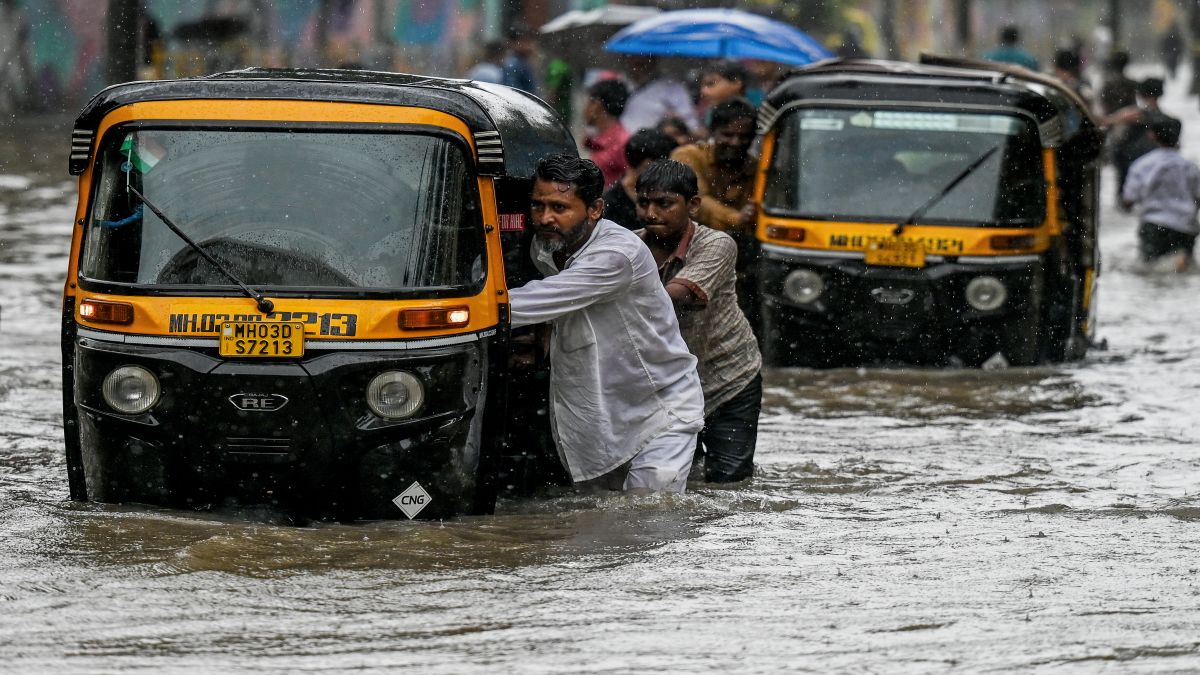Wet, wetter, wettest… That’s the only way you can describe Mumbai, India’s financial capital, right now. Since Friday (August 15), the city has been lashed with torrential rains — prompting the India Meteorological Department (IMD) to issue the season’s first red alert for August 18-19.
The relentless rain has also caused Mumbai’s civic body, the Brihanmumbai Municipal Corporation (BMC), to declare a holiday for government and semi-government offices as well as schools and other educational institutions. The civic body has also urged private establishments to instruct their employees to work from home.
But just how bad is the rain in Mumbai? And why is the city witnessing unprecedented rainfall?
Mumbai battered by heavy rain
The incessant rain since Friday has battered Mumbai, affecting daily life for thousands and thousands of its residents. Roads are waterlogged; vehicular traffic has been hit; the railways, which are a lifeline of the city, are crawling on submerged rail tracks, and flights have been diverted or delayed as a result of the downpour.
Moreover, the IMD issued a red alert for Mumbai for August 18-19, warning that the city would receive heavy to very heavy rainfall on Tuesday.
The civic body also instructed government and semi-government offices as well as schools and colleges to remain shut today (August 19). It also requested private offices to instruct their employees to work from home and avoid any unnecessary travel.
The heavy downpour in Mumbai also affected visibility on the roads, causing vehicular traffic to slow down to a crawl across various parts of the city. Low-lying areas such as Hindmata and King’s Circle in central Mumbai were inundated with water, as was the Andheri subway in Mumbai’s suburbs. In fact, the underpass remained shut for hours on Monday, forcing traffic to be diverted to other routes and causing further traffic jams.
Air traffic has also been affected by the incessant rainfall — on Monday, reports came in of one diversion and 10 go-arounds. According to plane tracker Flightradar24, there is an average 54-minute delay in all flights out of Mumbai. IndiGo Airlines also issued a travel advisory for passengers flying out of the financial capital, citing widespread waterlogging across key routes to the airport. The advisory warned that sluggish traffic could lead to further operational challenges, and travelers were advised to monitor updates via the IndiGo app or website.
The rains have also caused fatalities in the metropolis, with a 75-year-old man lost his life after a tree fell on him. The deceased has been identified as Satish Shirke. According to civic officials, the portion of the compound wall of the Hyderabad Estate quarters collapsed on a tree adjoining the wall. As a result of which the tree collapsed on the victim. According to the Brihanmumbai Municipal Corporation’s (BMC) disaster cell, the incident occurred at Nepean Sea road near Shimla House in south Mumbai.
The BMC’s disaster cell report also stated that an unidentified individual fell down in an open drain on Monday afternoon. The authorities said that the rescue operation for the person is still underway.
Additionally, a total of 26 tree collapse incidents were reported in Mumbai out of which 10 were in the island city, five in the eastern suburbs and 11 in the western suburbs.
How much rain is too much rain
According to officials, Mumbai has received 500 mm of rainfall in the past 84 hours, the equivalent of what the city receives for the entire month of August. Monday’s data revealed that areas in Chembur, Worli, Dadar, and Parel bore the brunt of the downpour, with figures crossing the 100 mm mark at multiple locations. Topping the chart was Chincholi Fire Station, which logged a staggering 361 mm of rain.
Even Maharashtra’s Chief Minister Devendra Fadnavis noted the record rainfall that the city received, saying on Monday that it had recorded 177 mm of rain within six to eight hours on Monday and called the next 10 to 12 hours “critical” for Mumbai.
Earlier, authorities said that Friday and Saturday’s rain in the city was the rainiest August day since the 2020 downpour.
The showers have also resulted in Mumbai’s lake levels to reach high levels. On Tuesday, the levels reached 92.42 per cent of the total 14,47,363 million litres capacity, the BMC data showed. Moreover, on Monday, Vihar, one of the seven lakes in the city, became the fourth to overflow this season after reaching its full capacity of 27,698 million litres.
Reasons behind Mumbai’s heavy rainfall
But what’s causing all this rain in the ‘Maximum City’? Weather experts say it is driven by a cocktail of weather systems; these systems are amplifying the ongoing southwest monsoon system.
Firstly, the catalyst behind these heavy rains is the low-pressure area over the Bay of Bengal, combined with an east-west trough over the Arabian Sea. This has enhanced the moisture in the air, causing intense precipitation across the region, especially Mumbai. Moreover, the rain-bearing clouds have remained stuck over the city resulting in heavy rainfall.
Experts also note that the rainfall in Mumbai is part of a wider story unfolding across South Asia. Each year from June to September, the monsoon sweeps through the region. But as global heat rises, the rains are becoming more erratic and intense, leading to deadly floods and dry spells. According to the Associated Press, nearly 1,300 people died in India due to heavy rain and floods in 2024, and hundreds more have already lost their lives this year across South Asia.
With inputs from agencies
)